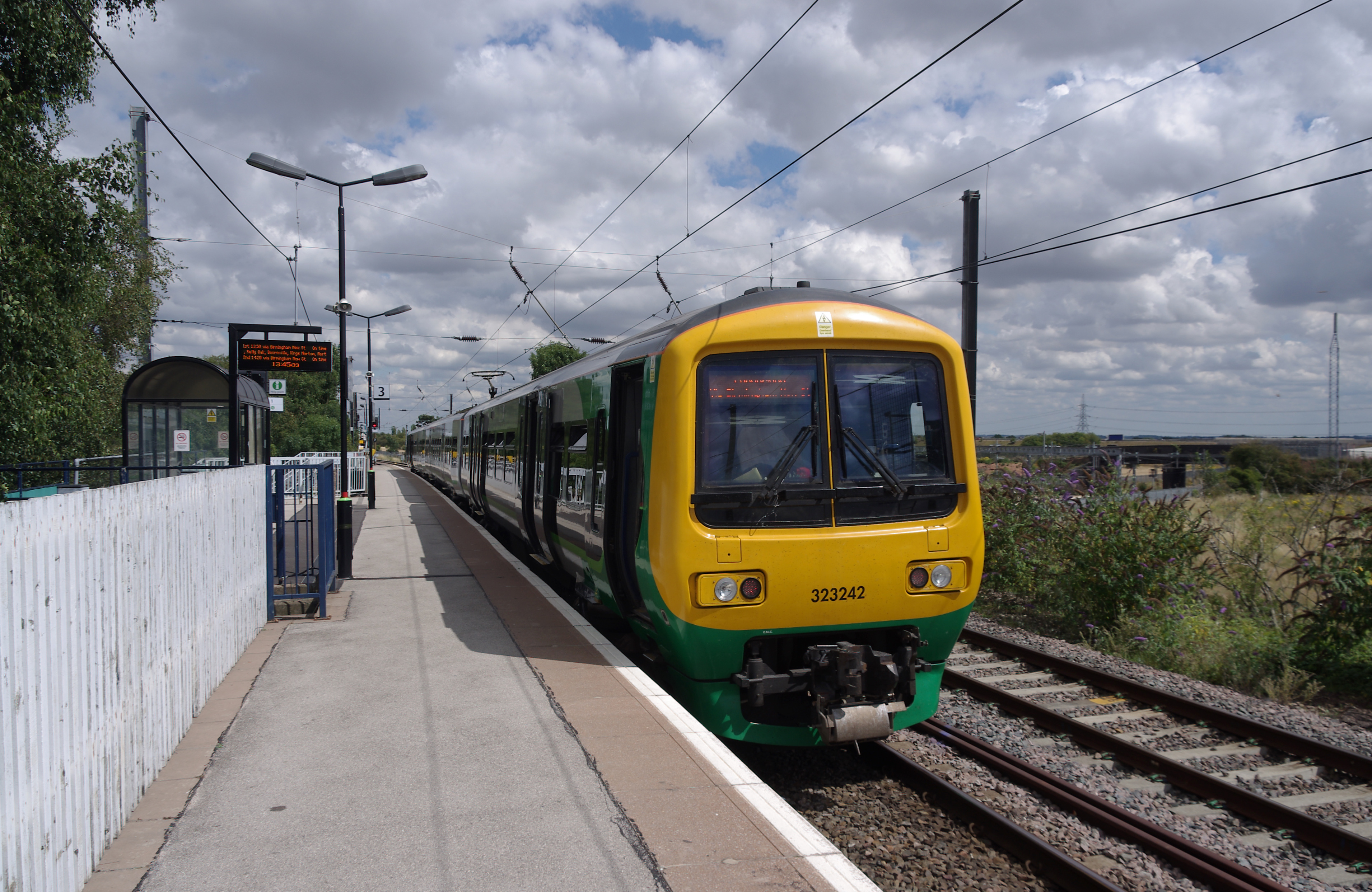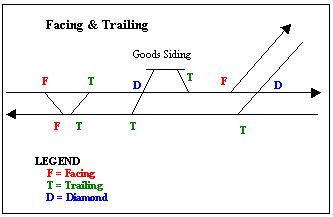|
Lichfield Rail Crash
The Lichfield rail crash was a rail crash which occurred on New Year's Day 1946 at Lichfield Trent Valley station in Staffordshire, England. 20 people were killed in the accident, caused when a points failure routed a goods train into the back of a stationary passenger train waiting at the station. This event, alongside the Abbots Ripton rail accident, is the basis for the story ''The Flying Kipper'' in the Railway Series by Rev. W. Awdry. The crash At Lichfield Trent Valley station there were four tracks running through the station: two fast through lines in each direction with loops on each side for trains stopping at the station. The crash occurred at 18:58, and involved the 14:50 fish train from Fleetwood to London Broad Street. This train consisted of seven four-wheel fish vans and a brake van hauled by a Stanier Class 5 4-6-0. It was travelling at around 35 mph when it passed into the station, and was scheduled to run through on the fast up line. However at the ... [...More Info...] [...Related Items...] OR: [Wikipedia] [Google] [Baidu] |
Lichfield Trent Valley Railway Station
Lichfield Trent Valley is a railway station on the outskirts of the city of Lichfield in Staffordshire, England. It is one of two stations in Lichfield, the other being in the city-centre. It is a split-level station, with low level platforms served by the Trent Valley section of the West Coast Main Line, and a single high level platform, which is the northern terminus of the Cross-City Line. Location The station is located 1 mile north-east from the city-centre and serves the east and north side of the city. It is also being used by commuters from surrounding villages, such as Fradley, Alrewas and Whittington. The station bears the name Trent Valley, as the line on the lower level was opened by the Trent Valley Railway, which ran between Rugby and Stafford. The River Trent is found around 6 miles north of Lichfield Trent Valley at Wynchnor Junction, where it is joined by two of its tributaries, the River Tame and the River Mease. Access to the station is from the A5127. The ... [...More Info...] [...Related Items...] OR: [Wikipedia] [Google] [Baidu] |
Rail Directions
Railroad directions are used to describe train directions on rail systems. The terms used may be derived from such sources as compass directions, altitude directions, or other directions. However, the railroad directions frequently vary from the actual directions, so that, for example, a "northbound" train may really be headed west over some segments of its trip, or a train going "down" may actually be increasing its elevation. Railroad directions are often specific to system, country, or region. Radial directions Many rail systems use the concept of a center (usually a major city) to define rail directions. Up and down In British practice, railway directions are usually described as "up" and "down", with "up" being towards a major location. This convention is applied not only to the trains and the tracks, but also to items of lineside equipment and to areas near a track. Since British trains run on the left, the "up" side of a line is usually on the left when proceeding in the "u ... [...More Info...] [...Related Items...] OR: [Wikipedia] [Google] [Baidu] |
1946 Disasters In The United Kingdom
Events January * January 6 - The 1946 North Vietnamese parliamentary election, first general election ever in Vietnam is held. * January 7 – The Allies recognize the Austrian republic with its 1937 borders, and divide the country into four Allied-occupied Austria, occupation zones. * January 10 ** The first meeting of the United Nations is held, at Methodist Central Hall Westminster in London. ** ''Project Diana'' bounces radar waves off the Moon, measuring the exact distance between the Earth and the Moon, and proves that communication is possible between Earth and outer space, effectively opening the Space Age. * January 11 - Enver Hoxha declares the People's Republic of Albania, with himself as prime minister of Albania, prime minister. * January 16 – Charles de Gaulle resigns as head of the Provisional Government of the French Republic, French provisional government. * January 17 - The United Nations Security Council holds its first session, at Church House, Westmin ... [...More Info...] [...Related Items...] OR: [Wikipedia] [Google] [Baidu] |
History Of Lichfield
Lichfield () is a cathedral city and civil parish in Staffordshire, England. Lichfield is situated roughly south-east of the county town of Stafford, south-east of Rugeley, north-east of Walsall, north-west of Tamworth and south-west of Burton Upon Trent. At the time of the 2011 Census, the population was estimated at 32,219 and the wider Lichfield District at 100,700. Notable for its three-spired medieval cathedral, Lichfield was the birthplace of Samuel Johnson, the writer of the first authoritative ''Dictionary of the English Language''. The city's recorded history began when Chad of Mercia arrived to establish his Bishopric in 669 AD and the settlement grew as the ecclesiastical centre of Mercia. In 2009, the Staffordshire Hoard, the largest hoard of Anglo-Saxon gold and silver metalwork, was found south-west of Lichfield. The development of the city was consolidated in the 12th century under Roger de Clinton, who fortified the Cathedral Close and also laid ou ... [...More Info...] [...Related Items...] OR: [Wikipedia] [Google] [Baidu] |
Accidents And Incidents Involving London, Midland And Scottish Railway
An accident is an unintended, normally unwanted event that was not directly caused by humans. The term ''accident'' implies that nobody should be blamed, but the event may have been caused by unrecognized or unaddressed risks. Most researchers who study unintentional injury avoid using the term ''accident'' and focus on factors that increase risk of severe injury and that reduce injury incidence and severity. For example, when a tree falls down during a wind storm, its fall may not have been caused by humans, but the tree's type, size, health, location, or improper maintenance may have contributed to the result. Most car wrecks are not true accidents; however English speakers started using that word in the mid-20th century as a result of media manipulation by the US automobile industry. Types Physical and non-physical Physical examples of accidents include unintended motor vehicle collisions, falls, being injured by touching something sharp or hot, or bumping into someth ... [...More Info...] [...Related Items...] OR: [Wikipedia] [Google] [Baidu] |
1946 In England
Events from 1946 in England Incumbent Events January February March April May June * 8 June – a victory parade is held in London to celebrate the end of World War II. July August September October November December Births *21 February – Alan Rickman, actor and director (died 2016) * 25 September – Felicity Kendal, actress *12 September – Neil Lyndon, journalist and writer Deaths *11 July – Paul Nash, artist (born 1889) See also * 1946 in Northern Ireland * 1946 in Scotland *1946 in Wales This article is about the particular significance of the year 1946 to Wales and its people. Incumbents *Archbishop of Wales – David Prosser, Bishop of St David's *Archdruid of the National Eisteddfod of Wales – Crwys Events *12 July – ... References {{England year nav , state=collapsed *England Years of the 20th century in England 1940s in England ... [...More Info...] [...Related Items...] OR: [Wikipedia] [Google] [Baidu] |
Railway Accidents In 1946
Rail transport (also known as train transport) is a means of transport that transfers passengers and goods on wheeled vehicles running on rails, which are incorporated in tracks. In contrast to road transport, where the vehicles run on a prepared flat surface, rail vehicles (rolling stock) are directionally guided by the tracks on which they run. Tracks usually consist of steel rails, installed on sleepers (ties) set in ballast, on which the rolling stock, usually fitted with metal wheels, moves. Other variations are also possible, such as "slab track", in which the rails are fastened to a concrete foundation resting on a prepared subsurface. Rolling stock in a rail transport system generally encounters lower frictional resistance than rubber-tyred road vehicles, so passenger and freight cars (carriages and wagons) can be coupled into longer trains. The operation is carried out by a railway company, providing transport between train stations or freight customer facil ... [...More Info...] [...Related Items...] OR: [Wikipedia] [Google] [Baidu] |
Railway Accidents And Incidents In Staffordshire
Rail transport (also known as train transport) is a means of transport that transfers passengers and goods on wheeled vehicles running on rails, which are incorporated in tracks. In contrast to road transport, where the vehicles run on a prepared flat surface, rail vehicles (rolling stock) are directionally guided by the tracks on which they run. Tracks usually consist of steel rails, installed on sleepers (ties) set in ballast, on which the rolling stock, usually fitted with metal wheels, moves. Other variations are also possible, such as "slab track", in which the rails are fastened to a concrete foundation resting on a prepared subsurface. Rolling stock in a rail transport system generally encounters lower frictional resistance than rubber-tyred road vehicles, so passenger and freight cars (carriages and wagons) can be coupled into longer trains. The operation is carried out by a railway company, providing transport between train stations or freight customer facili ... [...More Info...] [...Related Items...] OR: [Wikipedia] [Google] [Baidu] |
Interlocking
In railway signalling, an interlocking is an arrangement of signal apparatus that prevents conflicting movements through an arrangement of tracks such as junction (rail), junctions or crossings. The signalling appliances and Track (rail transport), tracks are sometimes collectively referred to as an ''interlocking plant''. An interlocking is designed so that it is impossible to display a signal to proceed unless the route to be used is proven safe. Interlocking is a safety measure designed to prevent signals and Railroad switch, points/switches from being changed in an improper sequence. For example interlocking would prevent a signal from being changed to indicate a diverging route, unless the corresponding points/switches had been changed first. In North America, the official railroad definition of interlocking is: "''An arrangement of signals and signal appliances so interconnected that their movements must succeed each other in proper sequence''". Configuration and use A ... [...More Info...] [...Related Items...] OR: [Wikipedia] [Google] [Baidu] |
Facing And Trailing
Facing or trailing are railway turnouts (or 'points' in the UK) in respect to whether they are divergent or convergent. When a train traverses a turnout in a facing direction, it may diverge onto either of the two routes. When travelled in a trailing direction, the two routes converge onto each other. History In the early history of railways in Britain, when signalling and interlocking were primitive, and staff were inexperienced, facing turnouts were a hazard, because a train travelling at high speed could be accidentally switched into a slow speed divergence or dead end. Facing turnouts were therefore banned, except when absolutely necessary. However, facing turnouts cannot be avoided where there are crossing loops on single lines. With the widespread availability of electrically interlocked signalling in modern times, the rule against facing turnouts has been relaxed. Diamond crossings Fixed diamond crossings (with no moving parts) count as trailing points in both direc ... [...More Info...] [...Related Items...] OR: [Wikipedia] [Google] [Baidu] |





